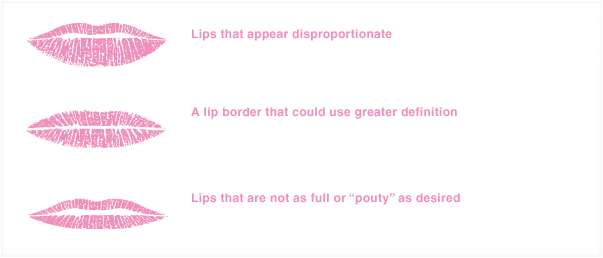Find Your Ideal Lip
Lips that say "you"—beautiful and just the way you want them
Everyone has an “ideal lip.” Discover yours.
Everyone’s facial structure is different—and so is everyone's ideal lip shape and size. Restylane® and Restylane-L® are helping redefine lip enhancement (for patients over 21) with treatment that follows well-accepted aesthetic guidelines. Used in this way, Restylane or Restylane-L can help you achieve your own “Ideal Lip.”
The Divine Proportion—an artist's vision of beauty
For centuries, artists have used the Divine Proportion to create harmony and balance. For lips, it translates into a guideline that the upper lip should be about 40% of the total height of the lips, and the bottom lip should be about 60%.
Not treated in lips



Your ultimate goals with Restylane or Restylane-L should be discussed during your initial doctor visit, which is why it's so important to choose an experienced doctor who understands lip aesthetics.
Is lip enhancement right for you?
Restylane and Restylane-L can be used for lip enhancement in patients over 21 years. Like many people, you may want fuller lips. Your lips may benefit from more volume and symmetry. Look in the mirror, and ask yourself if you see:
Attempts to enhance lip contours and fullness with lipsticks and lip plumpers offer limited results. Truly effective lip enhancement requires a professional-grade product administered by a trained healthcare professional. If you and your doctor agree it's the right choice, Restylane or Restylane-L can add fullness and definition to your lips, with an aesthetically pleasing, natural-looking result.
Important details about Restylane treatment
After treatment, you might have some swelling, redness, pain, bruising, or tenderness. These are typically mild in severity and normally last less than 14 days in lips. Swelling may be more likely in patients under 36 years, and bruising may be more likely in patients over 35 years.
Who should not use the Restylane family of products
Restylane and Restylane-L should not be used by people with previous bad allergies, particularly t o microorganisms known as gram-positive bacteria, or by people with serious allergies to drugs that have previously required in-hospital treatment. Restylane and Restylane-L should not be used by people with bleeding disorders, during pregnancy, or when breastfeeding. Restylane-L should not be used by anyone with a known allergy to lidocaine.
Please see below for Important Safety Considerations for the Restylane family of products.
